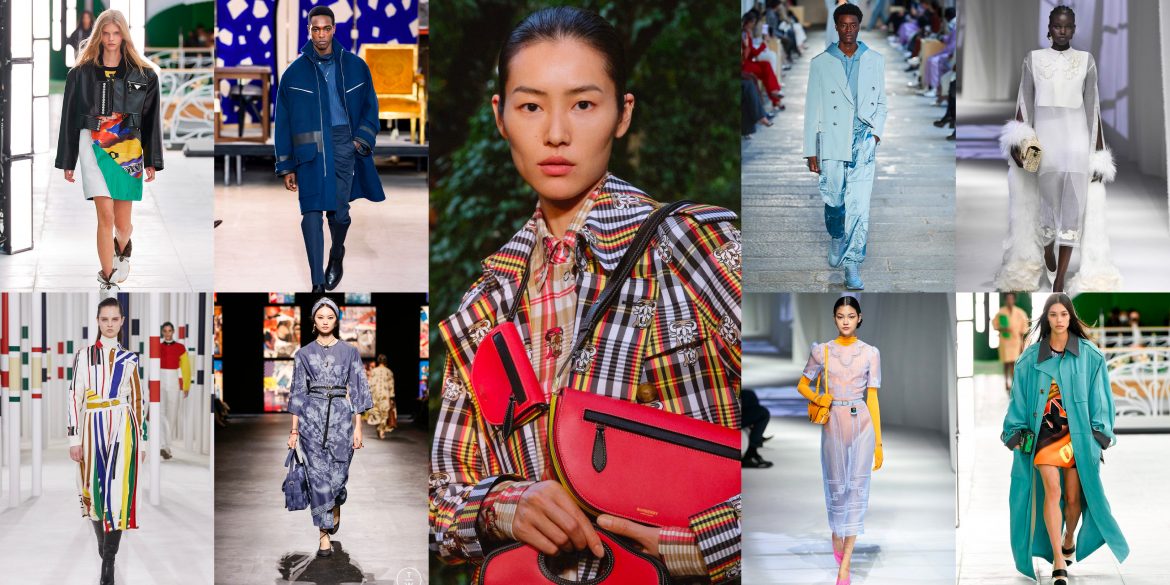You can add a Gucci belt to almost anything and the look, along with who wears it, goes from plebeian to haute, even if the belt is a fake. That is the influence of luxury. But what gives it that influence? I spoke to Dr. Laura Bachus, Assistant Professor of Psychology at Ohio University, to try to figure it out.
“People are social creatures, and one theory of self-esteem suggests that it is driven, in part, by a desire to gain approval from those around us,” says Dr. Bachus. People may feel pressured to buy luxury goods to show others how successful they are, or purchasing behaviors may be self-driven, as one might feel successful by having a highly desired or expensive item. [With] more life experiences, they may derive self-esteem from different sources that may not involve outward symbols of prosperity.”
So, it could be linked to community. More specifically, as told by The Atlantic, it’s “a sign of belonging to a relatively poor group”(Postrel, Inconspicuous Consumption).
This is a phenomenon known as conspicuous consumption, and designer brands have been creating smaller, more attainable, logo infested tickets to the luxury market, to profit from it. Things like wallets and keychains will flaunt the iconography of the brand and offer a taste of the prestige associated with it, but offer little value to the user aside from that. So what true value are these designer brands bringing to the table? Does a $470 Gucci belt make someone stylish, or is it just designer clout? To me, it’s a hallmark of income inequality.
I could have written this article based on research and the big picture but, instead, I zoomed in, and spoke to three fashion conscious residents of Greater Indianapolis. These are people I interact with on a regular basis through some combination of social media and real life: Divine, the creator of Indy’s Iconic, a group of promoters focused on creating safe events for under 21 youth and uplifting local black creators; Jessica Lykens, co-owner of the trendy Zodiac Vintage in Fountain Square; and Shadowink: multidisciplinary, tattoo artist, and owner of Inkfam Tattoo Gallery. I was curious if their answers would line up with the research I was seeing, and what sort of an impact designer brands were having in my community.
Jay Sedam: What is “style”?
Divine: Think about it like paint. It doesn’t matter what brand of paint you’re using, nobody is going to be impressed if you just can’t paint.
Jessica: Style is something that cannot be purchased. It’s earned and honed through life experience.
Shadow: As an artist, I appreciate the design and craftsmanship that goes into it.
JS: What was your early exposure to designer brands?
D: My dad started influencing what I would wear to school based on name brands, and what he thought ‘the kids’ were wearing. Growing up, my family could not just afford these items, now my family does pretty well….so my siblings will…I watched my dad gift my step brother a Gucci Shirt for Christmas one year which would have never happened when I was 10 years old….I knew not to ask. My interest came from watching what underground rappers were wearing and what the kids at my school were raving over in 2017. My first designer purchase that I felt cemented me into the fashion world was a $600 reversible Italian leather Ferragamo belt that I talked my dad into buying me my Junior year….I saw everyone else wearing these designer belts and I got [it] specifically because it was overpriced.
J: As a teen, dressing in designer pieces was never accessible financially so the obvious choice was to run in seemingly full force rebellion to the opposite direction….Thrift stores and buying second hand still felt very countercultural at the time and would generate a certain level of ostracism. ….it wasn’t until my early 20s that I started meeting people widely who were into vintage clothing and also the idea of wearing designer pieces began to make sense to me…. there was more to “designer” than the logo covered low end… designer pieces that were so prevalent and popular in high school…. I slowly began to learn more about brand/designer history and vintage designer items.
S: When I was [young] I got an Adidas tattoo because I couldn’t afford to even buy Nike. I was poor my whole life and would never justify [luxury] but I heard Kevin Hart talk about his Rolex collection. He was saying ‘how do you buy for yourself when you have everything’ and his dad always said ‘you’ve made it once you have [a Rolex]’ so he said ‘whenever I close a big deal, I buy myself a rolex.’ And now he has a hundred of them. So when I bought my shop I bought a diamond ring…. to commemorate it. I never even thought I would have diamonds, so when I first bought a diamond for myself I would go back and switch it out for a bigger one.”
JS: Where are you now in your style evolution?
D: The first thing I purchased myself was a grey and white MCM backpack…. because I had watched rapper YBN Nahmir carry one in his ‘Rubbin Off The Paint’ music video. I keep it hung up as a prop in my closet….It’s too expensive to go and get messed up. My style now is inspired by what the internet knows as ‘E-Boy’ fashion mixed with punk and rock inspiration as well as some Japanese street wear….Heavily Inspired by rap culture specifically rappers like Trippie Redd, The Hxliday, [and] Juice WRLD.
J: I have finally learned, in spite of years of fighting it, that if it doesn’t feel true and comfortable to your feelings, don’t commit to the look. ….If I’m going to purchase a new article of clothing it needs to be timeless and it should be well made….I interact with hoards of discarded cheap crap every day. It makes me want to minimize my consumption.
S: I’ve had the Louis [Vuitton] coin purse for like 10 years…it’s designer hood shit, but still hood shit. It’s a hip hop thing. My Gucci backpack I wear everyday, $2200, I feel like that sounds super frivolous, but it helped me more than those diamond rings ever did. They all become like milestones to the goal, wearable trophies… a reminder of how you got where you are.
JS: Are luxury brands worth it, or just clout?
D: I’m buying on a fixed budget, so I have had a hard time completing the look. Not saying that it’s impossible to find a newer brand or a lesser known brand that will give you what you want….sometimes you want to create a style, and it’s easier to do with designer brands. …if you are going to be in fashion, focus on what you’re trying to create more than what you’re using to create it.
J: I don’t ever see [luxury brands] popularity dying, but I do see a mainstream cultural shift towards appreciating things like sustainability, alternative aesthetics, and personal style.
S: I have clout without this shit. If you only value yourself based on how people look at you, you’ve already lost the game… it looks like ‘clout’ to those who haven’t gotten there yet.
If you look beyond the logo, there is a pattern. Companies are not creating for the consumer, they are creating consumers, and specifically marketing luxury goods to people who can’t afford to buy them. Leftover clothing and accessories that could have been donated or discounted, are often destroyed at the end of the season to keep demand for the product high and create an artificial exclusivity. How special would a $2000 Burberry coat feel if they were covering the racks of Goodwill 6 months later? What you wear, and how you wear it, is a personal experience with a public outcome. Regardless of what that looks like for you, we should all shop with gratitude and mindfulness. As Oprah Winfrey said: “My feet are still on the ground, I’m just wearing better shoes.”



